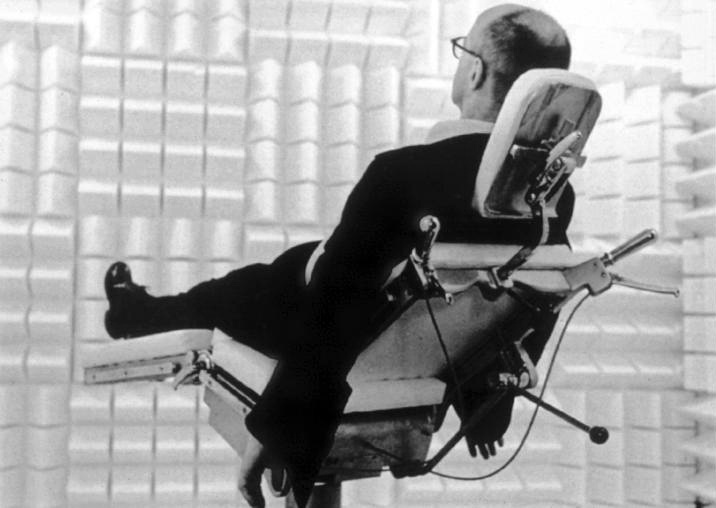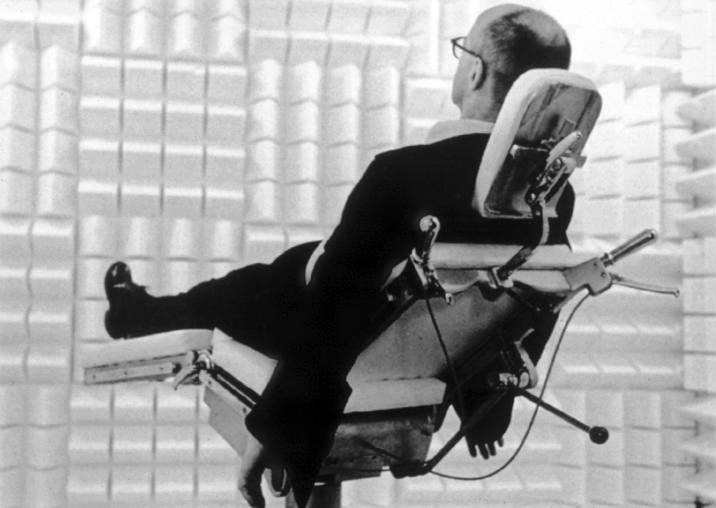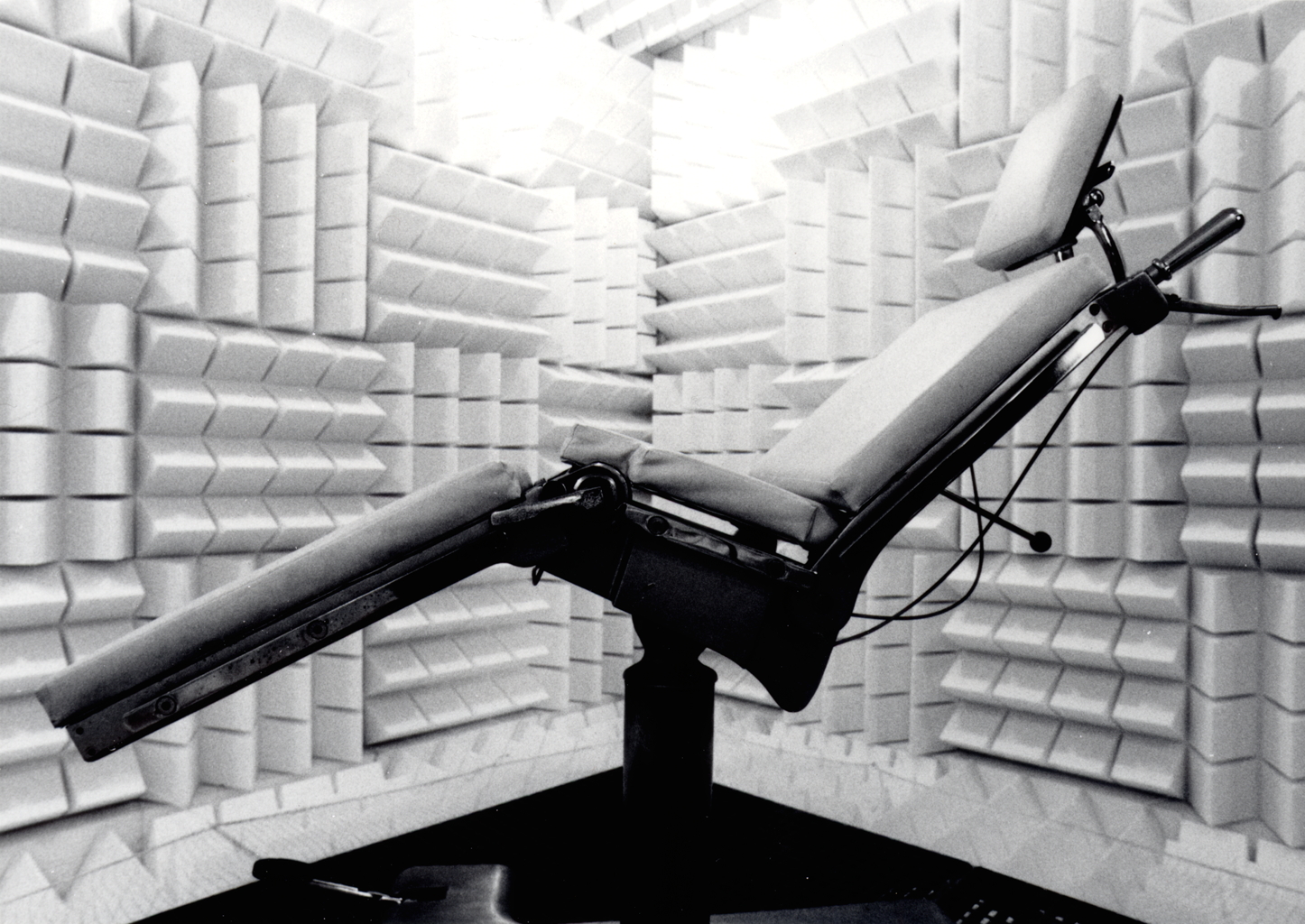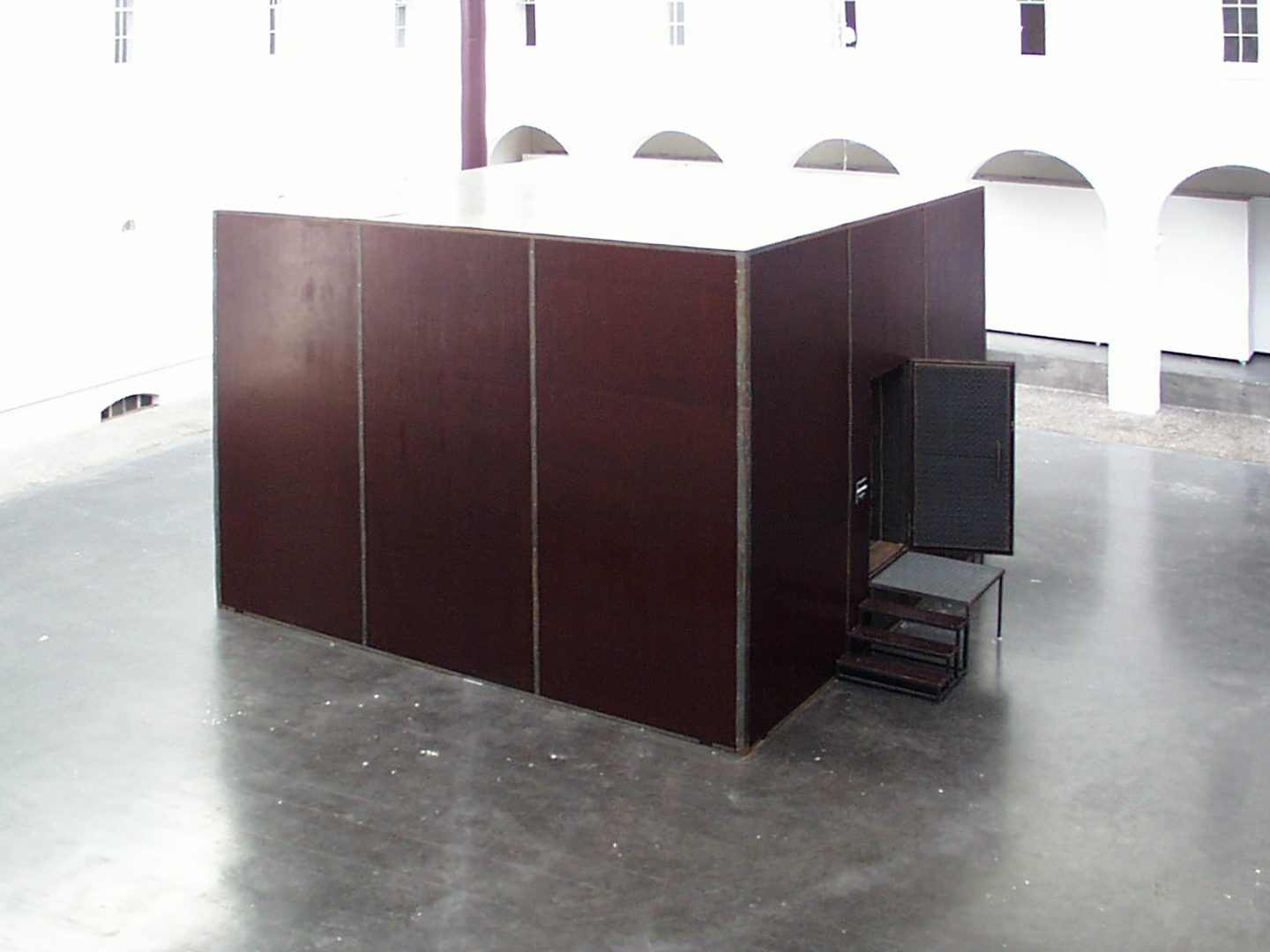Olaf Arndt, Rob Moonen
Camera Silens
1994
- Artist / Artist group
- Olaf Arndt, Rob Moonen
- Title
- Camera Silens
- Year
- 1994
- Category
- Installation
- Format
- Sound Installation
- Material / Technique
- soundproof room with stairs and floor grille (steel, wood, sheathing, insulating material), dentist’s chair, camera, monitor, electric lighting
- Dimensions / Duration
- 540 x 600 x 600 cm
- Collection
- ZKM | Center for Art and Media
- Description
- Olaf Arndt’s and Rob Moonen’s »Camera Silens« could be described as a piece of conceptual art, an environment, an installation, an interactive work of art and media, or a scenario for a media theater. »Camera Silens« does not fit easily within the common categories of art criticism, due to its complex and ambiguous use of media. Merely listing the material components of the project, going through the array of obscure archival material used to research the concept, or describing the spatial installation will not lead to an interpretive understanding of the project. However, it becomes immediately obvious that the environment not only possesses a formal sense of its own, but makes reference to a larger meaning beyond the bounds of its existence as artwork. »Camera Silens« was at first a neurophysiological experiment based on the problem-solving capacity of engineering. One of its ‘inventors’ describes its effects as follows: “The camerae obscurae et silentis are suitable as instruments of torture. The shielding and absorbing characteristics are an indispensable tool for the improvement of working conditions of sound engineers and media technicians.” Reading this quotation reminds us of the constant naivety of a technological media discourse which excuses torture as a side-effect. The exculpation of scientists' understandable human thirst for knowledge is inadvertently discredited in light of countless ideological critical opinions present in the humanities. It comes as no surprise that artists whose work is dependent on aesthetic and socially critical motivation remain both skeptical and curious. Arndt’s and Moonen’s documentary research into the history of this allegedly impartial scientific experiment go beyond the 19th-century history of technical psychology. Accounts of a test for personal improvement through the use of experimental media, or inquiries at the Stuttgart State Parliament about the effects of a penal experiment in Hamburg, read like a suspense-filled, historical novel. They make clear the multiple involvement of media technology, psychopathological fieldwork and strategies for the cooperative leadership (or seduction) of people. These discoveries are owed to subjective, artistic curiosity instead of the historian’s usual objective intuition. Arndt and Moonen compare documentary research with the environment’s direct and bodily experience. According to Olaf Arndt, each visitor should experience ‘his personal void’. One thing is clear for both artists: “We do not want to make an anti-fascist sculpture.” The all too obvious justification for the unfortunate reference in their artistic work to forensic psychology and National Socialist euthanasia, or the rapidly repressed events of the Deutscher Herbst of 1979, would suggest that this could be avoided through the actual existence of the »Camera Silens«. It represents a Trojan Horse, with a lurking ‘personal void’. Arndt believes that this, combined with the direct bodily experience of a total withdrawal of sensation, invites the possibility of an absolute experience of the self. The visitor to »Camera Silens« is by no means obliged to reflect on the results of the investigation. Subjective obsessions are far too overwhelming due to the experience of isolation, forcing the associative documentary guidelines into the background. The reports of those who have experienced »Camera Silens« reveal that, in it, a form of low-tech cyberspace exists: a cybernetic room, preprogrammed to perfection with total control, which suggests escape as the only possible reaction. – Hans-Peter Schwartz, 1997



